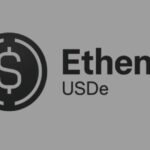The concluding guidance augments last year’s draft. New examples and custodial regulations are being incorporated as ASIC transitions from mere suggestions to mandatory supervision.
A major revision to its digital-asset guidance has been issued by Australia‘s financial regulator. This expands how existing financial-services laws relate to crypto enterprises while the government prepares comprehensive new legislation.
On Tuesday, a revised version of Info Sheet 225 was published by the Australian Securities and Investments Commission. This document clarifies the circumstances under which digital-asset products and services will probably be deemed financial products, as defined by the Corporations Act.
The most recent revision substitutes the earlier “crypto-asset” terminology with the more comprehensive phrase, “digital assets.” This change is designed to encompass virtual, tokenized, and coin-based products without any being excluded.
Even though new legislation is not being established by this guidance, ASIC stated that it intends to provide greater assurance to businesses before the Treasury’s proposed Digital Asset Platforms and Payment Service Providers bills. These bills will introduce official licensing for exchanges, custody platforms, and specific stablecoin issuers.
Australia’s ASIC Expands Crypto Guidance, Clarifies Licensing for Digital Assets
The regulator also reaffirmed that an Australian Financial Services license will likely be required under existing legislation for numerous digital assets. These assets include yield-bearing tokens, staking arrangements, and stablecoins referenced to an underlying asset.
The completed guidance expands upon ASIC’s December 2024 consultation. The number of worked examples has been increased from 13 to 18, and new sections on custody, fund administration, and provisional exemption have been introduced.
A diverse assortment of products is included in this group, ranging from tokens issued by exchanges and gaming NFTs to stablecoins that bear yield, wrapped digital assets, and platforms offering staking-as-a-service.
In every instance, an examination is conducted by ASIC to determine if the asset qualifies as a managed investment scheme, a derivative, or a non-cash payment facility, the outcome of which hinges upon its associated rights and benefits.
ASIC further emphasized that Australian law applies to structures that are offshore or decentralized if they are being marketed or sold to users locally. A warning was issued that global platforms cannot depend on geography to evade national supervision.
New custodial obligations were further detailed by the regulator. These necessitate that firms safeguarding client assets must satisfy net tangible asset minimums reaching up to 10million(US6.5 million), unless their function of custody is considered subordinate.
This revision is founded upon ASIC’s September decision where class relief was granted to intermediaries who distribute stablecoins originating from authorized issuers. Experts had previously characterized this action as a pragmatic bridge while the Treasury works to finalize its stablecoin regulatory framework.
That waiver permits stablecoins that have been issued by licensed entities to be disseminated without needing secondary-market or clearing authorizations, contingent on the issuers retaining accountability for mandated disclosure and adherence.
Upcoming Changes
This guidance is being delivered as the Labor government pushes forward its own digital-asset-platform legislation. This new law is anticipated to introduce a formal licensing system for exchanges and custodians sometime later this year.
ASIC indicated that its regulatory framework will be developed alongside those Treasury modifications, but that all entities should already be making preparations to adhere to the existing mandates.
“The government has said it wants Australia to be a leader in digital assets, but it’s all about balancing consumer protections and innovation,” a spokesperson for Australian crypto exchange Swyftx, “We don’t want to end up with a big value transfer away from local consumers and businesses to offshore providers.”
In a capitulation to the actualities of the market, transitional provisions were delineated by the regulator. These measures permit seasoned crypto experts to satisfy the criteria for responsible managers under AFS license stipulations, and potential temporary leniency was signaled for entities actively pursuing formal authorization.
In a significant inclusion, guidance was also introduced by the regulator for fund managers and issuers of exchange-traded products who provide retail access to digital assets. This sets clear expectations concerning custody, risk oversight, and mandated disclosure under Chapter 5C of the Corporations Act.
ASIC refrained from providing a definition for “true DeFi,” stating that the necessity for licensing among participants in decentralized-finance structures will be determined by their unique circumstances and specific responsibilities.
The regulator also recognized a point of convergence with other bodies, such as AUSTRAC, APRA, the ATO, the ACCC, and the Reserve Bank of Australia, thereby emphasizing a role that is anticipated to be performed within a wider regulatory structure.















